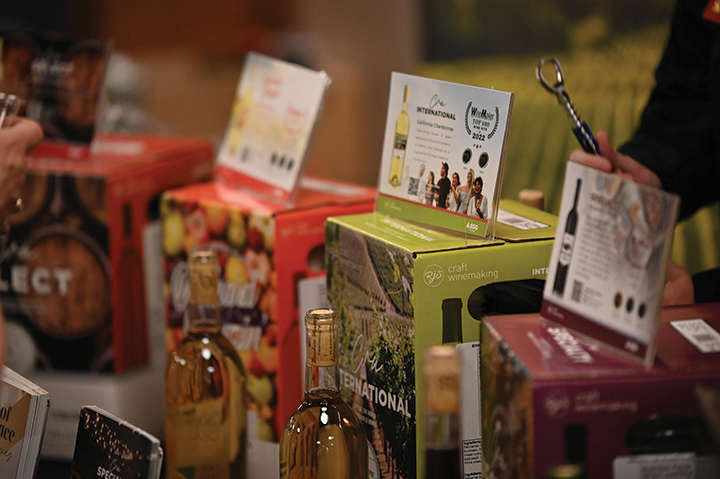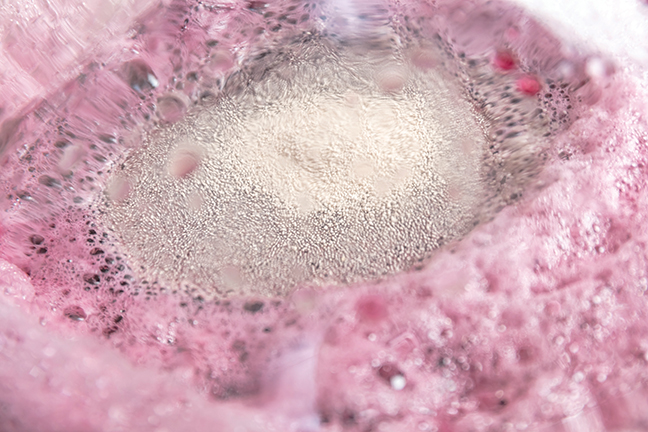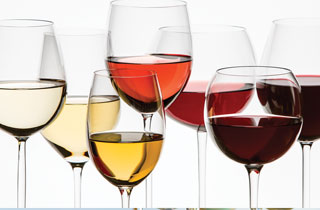
How long have you been making wine? And from kits?
Bob: I have been making wine since 2008. I started making wine from kits starting in 2010.
Don: My wife, Carol, and I started making wine ten years ago, at Curds and Wine here in San Diego, California, working with Gi Claassen. C&W worked largely with wine kits, so, yes, it’s been a kit wine approach since then. C&W had to close down during the COVID pandemic, so I moved my winemaking to my garage. It’s not the best setup, but it gets the job done.
Larry: The first wine I made was from one of the cheaper kits back in 2014. So it has been 10 years!
How much wine do you make per year, and what percent are from kits and red kit wines?
Bob: I usually make 200 gallons (750 L) of wine per year. The percent that are from kits varies from year-to-year. Five years ago, about 50% of my wine was made from kits. About 60% of those were red wine kits. This year I’m making three kit wines, and they are all red wines. I will also be mentoring several people making wine from kits.
Don: We typically make 6–8 kit batches per year, about evenly split between red and white wine. One of the changes I have made is increasing my batch size by upsizing to a 14-gallon (63-L) stainless steel fermenter. Now we make all double batches — two kits of 6 gallons (23 L) each, yielding 12 gallons (46 L) or 60 bottles. I figured that with all the setup needed for each operation, I might as well get more wine out of it.
Larry: I make around 15–20 different wines per year (5- or 6-gallon/ 19- or 23-L batches), with maybe half being kits, and 2⁄3 of those are red wine kits. I guess that makes about seven red wine kits per year. Kits are perfect to fill in those times of year when fresh grapes aren’t available or to make varietals that just aren’t grown where I live in Syracuse, New York. If I don’t have something fermenting, my wine room just feels empty.
What kit wine quality tier do you most often buy for red wines? If you’ve made wine from different quality tiers, what’s your take on value vs. resulting wine?

Bob: I have found that with wine kits you get what you pay for. All the less expensive kits produce a very drinkable and enjoyable wine. The upper-tier (priciest) produce extremely fine quality wines. The upper-tier kits with the wine skin packets are the most enjoyable to make and produce a wine comparable to wine made from grapes. That said, any of the tiers that offer an unusual varietal from another country is a great experience. The Negroamaro wine I made from Italian grapes is my all-time favorite kit.
Don: Almost all of the wine kits I buy are the highest/higher end. I’ve mostly used Winexpert kits, and lately a few from VineCo. What I really look for are the limited edition releases from Winexpert — these are varieties and blends that are special and limited in quantities, and once they’re sold out, you’ll never get them again.
I’ve found that even the mid-tier kits produce very drinkable wine, though the higher-end kits are clearly a cut above – a wine you can savor.
Larry: I started with the cheaper kits and now buy almost exclusively the highest-end editions. I find the more expensive kits are reflected in the quality of the juice — though the cheaper editions have improved dramatically. Many of the more expensive kits include grape skin packs, which are critical to making higher quality red wine. Even at the most expensive level the cost of wine per bottle easily outperforms almost any wine I could buy at a store at double or even triple the price.
Do you follow all directions to a T on the red kit wines, or do you deviate from the process?
Bob: Initially, I followed the directions exactly. I would suggest to anyone starting out with kits to make several kits following the direction provided by the manufacturer without the slightest deviation.
That said, once you have many kit wines under your belt, there may be things you wish to change. To make my most recent red wine kit, I changed the yeast from the EC-1118 provided to BM 4X4. I wanted a different flavor profile and felt the BM 4X4 yeast would provide it. I used a better quality of bottled water and reduced the amount of water added by about 1 quart (1 L). The bag containing the grape skins was left in two extra days. When the directions called for adding the oak cubes, the cubes were left in for an extra week. As part of the bottling process, I filtered the wine using a 0.5-micron filter. None of those changes I made are crazy, but again, if you don’t know what the wine should taste like when following directions, how will you know if any changes you make improved the wine or not?
Don: I’ve pretty much adhered to the wine kit recipe. The kit producers have worked out the process to make it fairly foolproof. I have tried some variations in yeast, but still stayed close to what the kit producers recommend.
Larry: Nowadays I use the kit juice and usually ignore everything else that comes with the kit (including the instructions), except any grape skin packs. Before I even order the kit I research the best yeast to use for the varietal and use that in place of the default yeast. While EC-1118 is a great yeast and almost guaranteed to work (especially for people new to winemaking) I prefer to use a yeast that will bring out the best qualities of the varietal.
The amount of water I add is based on specific gravity (SG), not volume. For a typical wine I bring it to around 1.090 SG (21.6 °Brix), though more tannic, bold wines I may go as high as 1.100 SG (23.8 °Brix).
I also ferment at a temperature best suited to the varietal and yeast. I use the appropriate oak (French vs. American and toast levels). I never use clarifying agents with red wines, opting instead to just let the wine bulk age and clarify on its own. Basically, I use the juice as if I had purchased a grape juice bucket rather than a kit and then tailor the wine to my liking.

How long do you age your red wines from kits, and what have you found as the sweet spot?
Bob: I age my red wine kits for a minimum of three months. Six to nine months is optimum. When aging for longer than three months it is always a good idea to add some additional SO2, per the manufacturer’s directions. As an experiment, I currently have a red dessert wine that has been aging for five years.
Don: I’ve been adamant about aging red wine for two years before releasing it. When I bottle the wine, I also fill a couple of half-size splits. These are for sampling at six-month intervals. As much as I want the red wines to be ready (enough) at one year, I can still taste that it needs more aging. Patience, young man.
At 2-4 years, they’re in their prime. At 5+ years, they seem to start losing their character.
Larry: I still have some bottled wines from 2015 and they are still fully drinkable. Like any wine, the more tannic or alcoholic you make it, the longer it might take to reach its peak. I made one kit (a Cabernet/Merlot/Syrah blend) that I thought was terrible after fermenting. The next year I entered it in the WineMaker competition mostly to get the notes and see what I did wrong. It won a gold medal! So I opened another bottle and tried it again (now aged a year) and it was wonderful. I am not a patient person, but winemaking is teaching me to be more and more patient.
Have you made blends from different kits? If so, do you blend after making them individually or prior to fermentation?
Bob: I don’t blend kit wines.
Don: When making wine from grapes, per Alison Crowe’s guidance, blending can balance fruitiness, structure, body, oak, and tannins. On the other hand, kits always come well balanced, so there’s little risk in taking a bulk approach to blending. At best, my wine kit blending is done to add another “layer” to the flavor profile, adding additional complexity to make the wine more interesting.
I’ve done a few blends with red wine kits, all after fermentation. Some wines need to stand on their own and not be blended, like an Old Vine Zinfandel or a Pinot Noir. I consider Merlot as a blending wine — I like to use it to back up a Cabernet Sauvignon, or as I did with the Super Tuscan that received a gold medal in the 2024 WineMaker competition. That wine was a double batch of Winexpert Super Tuscan. It came out quite good, but I wanted to see if I could add that extra layer of flavor in the background. I had a single batch of fermented Winexpert Merlot and I combined them just before bottling. It worked quite well – no real art or science there, I was just trying to get a bit more complexity to the wine. And it worked!
I also did a Cab-Merlot blend from individual kits. This was simply motivated from recalling that years ago, many bottled wines printed the blend by percentage, and as I recall, I saw a lot of Cabs listed as ~60% Cab, ~30% Merlot, and ~10% Cab Franc. So I replicated that with two batches of Cabernet Sauvignon, one batch of Merlot, then spiked it with a few bottles of Cab Franc, all blended after fermentation. It came out very good, but for reasons I can’t explain, I didn’t enter it into competition — and now it’s all gone. I think I’ll do this again!
Larry: I recently realized that I needed to learn how to blend wines effectively. So last year I fermented both a Cab Franc and a Cab Sauvignon separately and blended them after fermentation. I think it came out well, but we will see once it ages how the flavors come together. In my opinion, kits are the best way to learn new techniques such as blending as grapes are only available once a year and the fear of messing up your one chance tends to hold you back from trying new things. If you ruin a kit batch it is a loss but one you can easily recover from just by buying a new kit.
What do you think separates an award-winning wine from the typical wine made from the same kit?
Bob: Effort. The kit winemaker must be willing to follow directions when new to winemaking. When you understand the process and are ready to experiment with your kits, still follow the best winemaking practices such as cleanliness, quality ingredients, and aging. My first Best of Show award was a red wine kit made following the manufacturer’s directions exactly with no changes. My youngest son’s most recent Best of Show was a dessert wine kit in which he changed the yeast, the type and amount of water added, the fermentation temperature, and he aged the wine for two years while following sound winemaking practices. Both approaches work.
Don: Aside from the blending aspect, when making a kit wine, sticking to the recipe is first and foremost. There is some opportunity to try different yeasts; admittedly, this is an area that I haven’t played with much. I have a tough time considering yeast variations, then aging for two years to see how it came out. I should have started this hobby when I was younger!
Managing the fermentation temperature is an important aspect. Red wine kits ferment very vigorously (I’ve had these bubble up through the airlock and splatter my garage walls) and get up to the high end of the recommended temperature range. I generally don’t ferment in the summer months (my winemaking operations are in my garage, subject to outside temperatures). I did get a thermostat-controlled heat mat that I use in the winter to bring the fermentation temperature right where the recipe recommends.
Since one of the ranking criteria for wine judging is clarity, I always filter just before bottling with the Buon Vino Mini Jet, using a #2 filter.
Larry: I think utilizing the proper yeast and eschewing the clarifying agents, plus giving enough time for the wine to integrate, are the main factors. Let the must tell you what it needs instead of forcing some scientific method upon it. I have ruined perfectly good wines by trying to force the “perfect” pH levels when I would have been better off just letting the must speak for itself.
Most of all, make the wine you want to drink. Medals are great, but a gold medal wine you don’t want to drink is just not worth the effort.
What’s the biggest thing you’ve learned in your kit winemaking experience?

Bob: Before starting to make the wine, read the directions several times. Have everything necessary for the winemaking process. Everything that contacts your wine juice must be sanitized. Not just clean, but sanitized. Wash your hands for 20 seconds. After cleaning your equipment, sanitize the equipment. As you start the process, think before you do. All the steps making a wine from a kit must be performed in a precise order and at the correct time.
And having a partner making the kit wine with you makes everything much more fun. My son assists me with my kits, and I help him with his kits. Working with him enhances the winemaking experience.
Don: My winemaking mentor, former Curds and Wine Owner Gi Claassen, infused in me a scientific discipline in adherence to the wine kit recipe, as well as equipment cleanliness! Her shop had a glass case full of wine competition medals. I asked her how she got all those. She said, “doing the same as you are right now.”
Larry: Patience. Don’t rush the process. The instructions are guidelines and great for novice winemakers, but let the must/wine tell you when to move on to the next step. Kits were the perfect learning tool in the beginning of my wine journey. I researched each step so I could understand what I was doing and why. That allowed me to make changes in the next kit that fit what I like to do as a winemaker.
Winemaking is winemaking, so you can learn from non-kit articles in WineMaker magazine. Use every resource you can find to better understand the science so you can apply your individual art more effectively. The same principles that you find in any kind of winemaking are pertinent to kit winemaking as well.
If you had one other piece of advice for a novice winemaker about making a red wine from a kit, what would it be?
Bob: If in doubt, or you make an error, call the manufacturer for assistance. They may be able to help, and in my experience are eager to do so.
Don: #1 – get some help to get started. It is way too daunting to buy a kit and equipment and just start. We were fortunate enough to have Curds and Wine to get us started.
There are clubs like the American Wine Society, and locally, the San Diego Amateur Winemaking Society, where regular meetings bring winemakers together, providing a great source of knowledge.
And lastly, but most important, subscribe to WineMaker magazine! The online version has an index to numerous articles about making wine with kits and other topics that are useful. Plus, there are true superstars writing for the magazine that are there to help: Alison Crowe, Bob Peak, Chik Brenneman, and Wes Hagen to note a few.
Larry: The best advice for kit or non-kit winemakers is use patience (this is something I am still learning how to do). But for a novice winemaker I would suggest researching each step. Learn what you are doing and why. Why do we rack after fermentation? When is the best time to do so? What are sulfites and sorbate and why are they used? When and how should they be used? Each step can take you down a rabbit hole (as the old adage states: Ask three winemakers a question and you will get five answers), but eventually you will come up with your own preferred method. This is the “art” of winemaking.
But most of all, this is a hobby — have fun!






